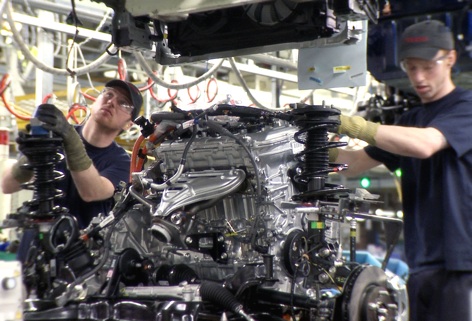We are hearing a lot of about onshoring from the industry and with increases in transport costs, rising wages in China and a more competitive exchange rate, the prognosis is good for the return of manufacturing to the UK, but I must ask the question whether we have sufficient skilled labour to take advantage of this opportunity.
Despite unemployment levels of around eight per cent (2.5 million people) in the first half of 2012, apprenticeship places remain unfilled and the level of skilled workers in many manufacturing facilities is still well below that required. While manufacturing production in the UK fell in May 2012 by 1.7 per cent over last year according to the Office of National Statistics, there are strong indicators that this tide will turn with companies returning to, or expanding production in, the UK. However, I believe that the skills shortage could seriously disrupt any potential growth in the sector and growth will only be achieved if companies have the right people in the right jobs.
Key factors such as the ageing population will mean a shortage of skilled labour
Maintenance is an area of particular concern. We provide maintenance services to companies such as Caterpillar and Eaton, and are very aware that key factors such as the ageing population, and retiring baby boomers will mean a shortage of skilled labour. Our approach to addressing the skills shortage is to create a compelling opportunity for career progression and training. By transforming perceptions of traditional maintenance roles we are attracting the right people from outside the sector. In the US, and indeed more recently in the UK, ATS has focused on attracting ex-services personnel as they have the mix of competencies, the drive and project management skills that suit the available roles.

The drive to move business back to the UK is not just about labour costs. Companies such as BT and Santander returned their call centres to the UK because the customers demanded it. In manufacturing circles, Toyota produces the new hybrid engine at the UK plant in Deeside and then ships this back to Japan for installation, reminding us that production should not only be where it is most cost-effective but also where you can guarantee the standard of production and delivery required by customers.
The increasing cost of raw materials, transportation and the complexity of supply chains are also major considerations when considering plant location. It has taken harsh lessons in reality for companies to realise the fully loaded cost, not just the unit cost, has to be measured. Aside from the increasing costs already mentioned, there have always been ‘hidden’ costs associated with offshoring that, when considered, paint a slightly different picture. For instance, it is almost always necessary to engage a local agent to act as an interface with the supplier. There are long lead times, minimum-order quantities that necessitate holding more stock, this impacts upon cash flow and increases the danger of stock obsolescence. There is additional travel costs, as well as the difficulties arising from language and time-zone differences.
We have seen the effect of onshoring already in the US with companies such as Caterpillar opting to relocate its new plants in the US. The driving force for this was increased shipping costs, supply-chain complexity and inconsistent quality, which meant that the offshore plants were just not competitive.
The increasing cost of raw materials, transportation and the complexity of supply chains are also major considerations when considering plant location
Manufacturing is quite rightly back in the spotlight, but it needs a concerted investment in training, and a ‘make-over’ to ensure that it attracts the right candidates, so that it can once again serve as the catalyst for prosperity. The sector spurs demand for everything from raw materials and intermediate components to software and services of all kinds. Studies and statistics show that manufacturing significantly impacts upon the widespread creation of jobs-and wealth.
So why is manufacturing facing such a remarkable problem? Unfortunately, the old stereotypes of back-breaking labour and grimy working conditions persist. Ask people today what they think of manufacturing and most will probably describe dirty, dangerous work that requires little thinking or skill, and offers minimal opportunity for personal growth or career advancement. This is totally inaccurate.
Today’s manufacturing jobs are ‘cool’ and appealing. Workers are now required to be experts and operate the most sophisticated equipment in the world. They can cut steel with lasers, water jets and plasma cutters and can program robots to paint, package and palletise products. Computer programming and other high-tech skills are needed, which dovetails precisely with what younger people love these days; these jobs can be more fun and, ultimately, more satisfying than many service-sector jobs.
To be fair, the government has made some steps to address this but much more needs to be done to ensure we capitalise on the opportunity presented and ensure the multinationals see the UK as the most viable option for their manufacturing plants.





Red Bull makes hydrogen fuel cell play with AVL
Formula 1 is an anachronistic anomaly where its only cutting edge is in engine development. The rules prohibit any real innovation and there would be...